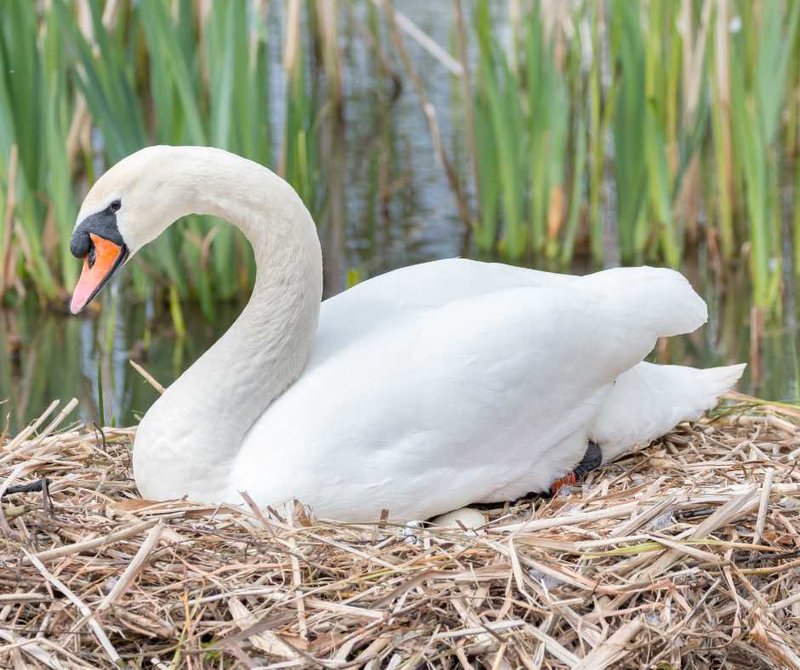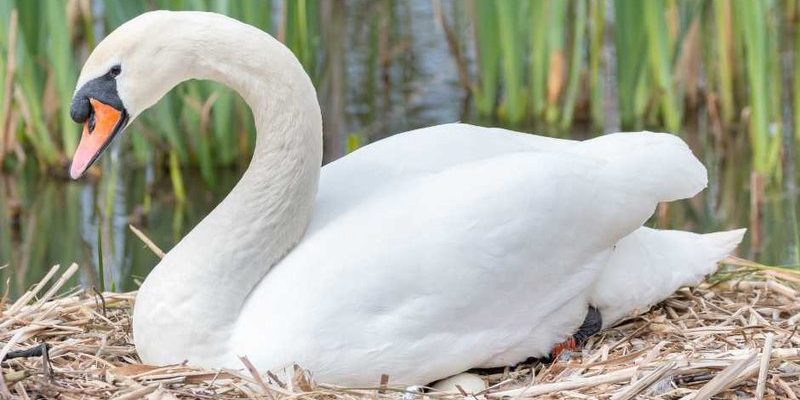
Let me explain how swans go from charming adults to doting parents. From finding a partner to preparing a cozy nest, their journey is filled with challenges and triumphs. Understanding their nesting habits gives us insight into their behavior, and honestly, it makes us appreciate these creatures even more. So, grab a warm drink, and let’s dive into the lovely world of swans.
Understanding Swan Habitats
Swans are known for their elegant presence in various waterways, so it’s no surprise that their nesting areas are typically near lakes, rivers, or marshes. These locations aren’t just chosen randomly; they play a crucial role in the survival of their young. The right habitat provides safety from predators, ample food sources, and a comfortable environment for raising cygnets, the name for baby swans.
Most swan species prefer shallow waters filled with aquatic plants. These plants not only serve as a food source but also offer excellent materials for building nests. Swans tend to select spots that are somewhat secluded, usually near the shore. Picture a cozy nook hidden among reeds—this is where they feel secure to start a family.
It’s also vital to note that swans are monogamous and often return to the same nesting site each year. Once they’ve made a connection with a partner, they’ll typically stick together for life, reinforcing those bonds with annual rituals, such as mutual preening and synchronized swimming. This teamwork extends to nest-building, where both parents contribute, ensuring their future offspring will have a safe place to grow.
The Nesting Process
When swans are ready to nest, they launch into an impressive building phase. They gather materials like reeds, grasses, and even feathers to construct a robust nest. It might look like a simple pile of vegetation, but there’s a lot more to it than meets the eye. Think of it as a cozy little fortress, designed to protect the eggs from harsh weather and prying predators.
The nest’s location is chosen carefully, often in shallow water to provide access yet shield them from possible threats. Swans lay between 5 to 7 eggs in a season, with the female typically doing the sitting. During this time, the male swan acts as a protector, keeping watch for any potential dangers. It’s a bit of a team effort; they work in harmony to keep their future family safe.
Interestingly, swans can also be quite picky about their nesting materials. They often incorporate materials like mud to reinforce the structure and make it more stable. This nesting behavior is essential, as a sturdy nest helps ensure that the eggs remain undisturbed and safe until they hatch.
The Incubation Period
Once the eggs are laid, the incubation kicks off, lasting about 35 days. During this period, the female swan remains primarily on the nest, ensuring the eggs are kept warm and safe. You might wonder why the male swan doesn’t sit on the eggs. Well, he has his own essential role—guarding the nest from predators and maintaining their territory.
The incubation phase is a vulnerable time for the swans. While the female is busy keeping the eggs warm, she has to rely on the male for protection. It’s not just about keeping the nest safe; the male also deters any intruders from coming too close. This is crucial because, if a predator were to approach, it could mean disaster for the eggs.
During incubation, the female swan sometimes leaves the nest briefly to feed. But she usually does this only when the male is nearby, ready to step in if trouble arises. Their teamwork is a beautiful dance of trust and responsibility, ensuring that their future cygnets have the best chance at survival.
Cygnet Hatching and Early Life
Once the incubation period ends, the eggs begin to hatch, usually within a day or two of each other. These little cygnets are incredibly cute, often sporting fluffy gray down feathers. But don’t be fooled by their adorable appearance! They’re born ready to swim and feed, which is a vital survival skill in the wild.
After hatching, the parents lead their cygnets to the water. This is a critical moment. The family often stays close together, with the parents making sure to keep the little ones safe from dangers like larger fish or birds of prey. You can imagine them gliding across the water, a tight-knit family unit enjoying their new home.
It’s important to understand that cygnets rely heavily on their parents for the first few months of life. They learn about feeding from watching mom and dad. Their diet will consist of aquatic plants, insects, and small fish—all vital for their growth. The parents continue to protect and nurture them until they are mature enough to fend for themselves.
Growth and Development of Swans
As the cygnets grow, their fluffy down feathers are gradually replaced by adult feathers, turning them into stunning swans. This process takes about 5 to 6 months, during which time they learn essential skills like foraging and evading predators. Honestly, watching them grow up is like seeing a live-action fairytale unfold!
During this development phase, the parents take on a more hands-off approach, allowing the cygnets to explore and learn independently. However, they’re never too far away, keeping an eye out for any signs of trouble. You might say it’s a mix of encouragement and protection, helping the young swans gain confidence without losing sight of safety.
Interestingly, at around 6 months old, young swans often start to fledge. That’s when they develop the ability to fly. This is a milestone that opens up new opportunities for them—such as exploring new territories or finding mates. It’s both an exciting and bittersweet time, as they begin to break away from their parents while still being connected.
Long-term Relationships and Lifespan
Swans are known for their strong bonds, often pairing for life. After the cygnets leave the nest, they may stay with their parents for up to a year before venturing out on their own. This extended family time helps them learn vital skills and prepare for adult life. You might think of it as a rite of passage, where they take their time before fully embracing independence.
As they start their own journeys, they’ll seek out their own mates and begin the cycle anew. This creates a continuity of life that’s beautiful to witness. Swans can live for around 10 to 20 years in the wild, and even longer in captivity, making their long-lasting relationships even more significant.
Every new generation of swans continues the lineage, sharing the same nesting habits their parents practiced. This natural cycle keeps their population stable, while also teaching us the importance of family and tradition in nature.
Challenges and Conservation Efforts
Despite their beauty, swans face several challenges in the wild. Habitat loss, pollution, and climate change pose severe threats to their nesting habits and overall lifecycle. Many swan populations have declined due to these factors, emphasizing the need for conservation efforts.
Organizations around the world are working hard to protect swan habitats and ensure they have safe nesting environments. This includes restoring wetlands and implementing laws to combat pollution in waterways. You might be surprised how much small actions, like cleaning up local lakes, can help make a difference.
Moreover, raising awareness about the importance of swans and their ecosystems fosters community involvement. When people understand why it matters to protect these birds and their habitats, they’re more likely to take action. After all, taking care of our feathered friends helps preserve the beauty of nature for generations to come.
As we take a moment to appreciate swans and their incredible lifecycle, let’s remember that our actions can directly impact their future. Supporting conservation efforts, maintaining clean habitats, and advocating for nature can all contribute to the survival of these magnificent creatures.
In conclusion, swans are more than just elegant waterfowl. Their nesting habits and lifecycle reveal a world full of love, dedication, and resilience. By learning about these fascinating birds, we can work together to ensure they continue to grace our waterways for years to come.

